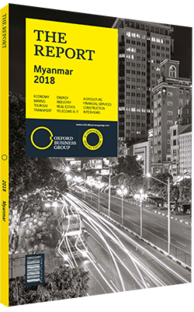This chapter includes the following articles.
Economy

Although it has moderated from earlier double-digit highs, GDP growth remained robust in the early 2010s, accelerating from 5.3% in 2010 to 5.6% in 2011, 7.3% in 2012, 8.4% in 2013 and 8% in 2014. Growth has dropped off slightly since 2015, reaching 7% that year and 6.1% in 2016, according to the IMF. External headwinds, internal conflict and delayed implementation of some key reform policies will undoubtedly continue to weigh on macroeconomic growth, but Myanmar’s economic forecast remains broadly positive. While both trade and fiscal deficits present challenges to Myanmar’s public sector stakeholders, increased private sector participation in economic development promises to help the country mitigate declining natural gas revenues, as both ongoing tax reform and fiscal rationalisation preserve financial and economic stability into 2019. This chapter contains interviews with U Kyaw Win, Minister of Planning and Finance; U Phyo Min Thein, Chief Minister, Regional Government of Yangon; and Nguyen Xuan Phuc, Prime Minister of the Socialist Republic of Vietnam.

